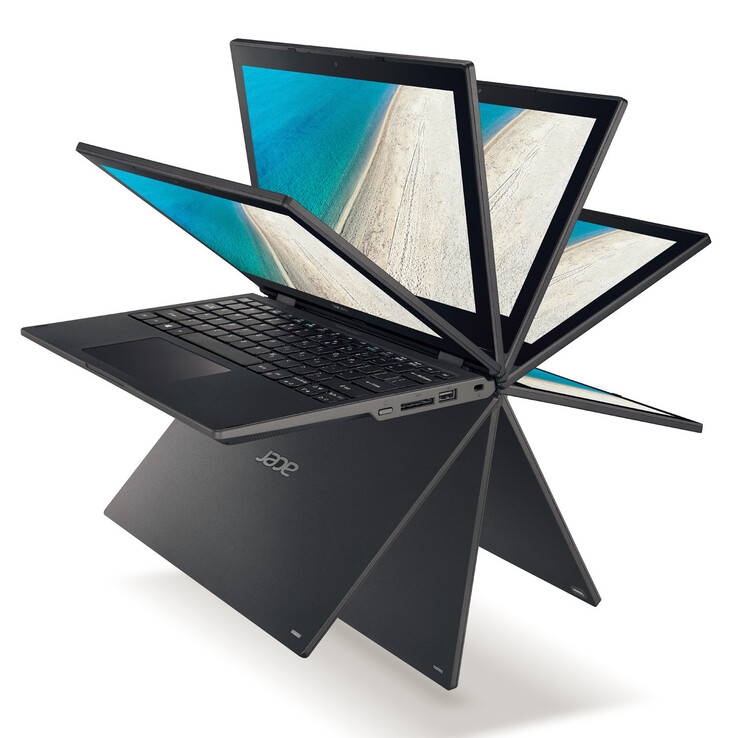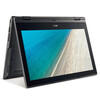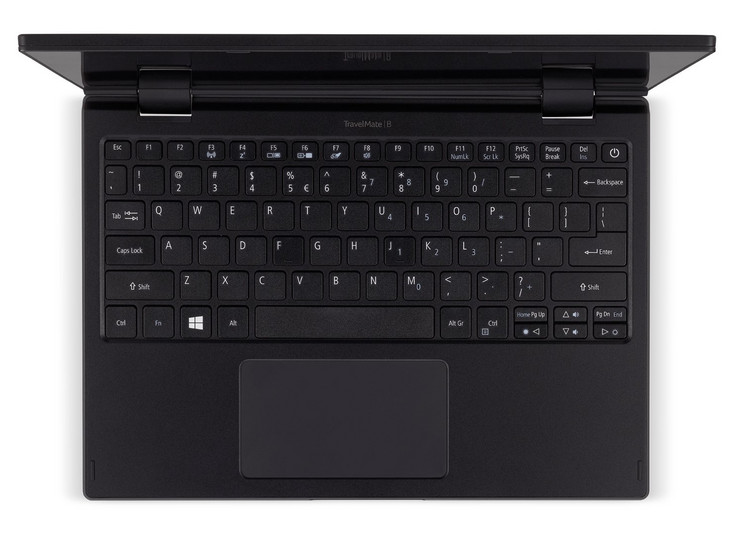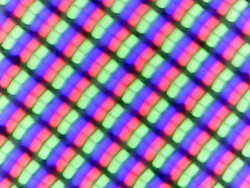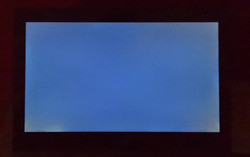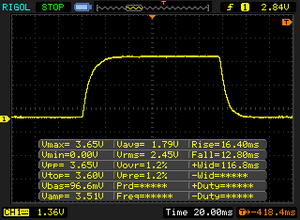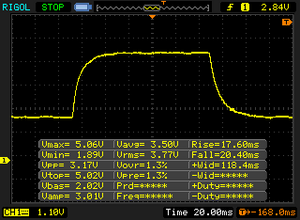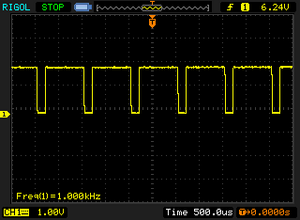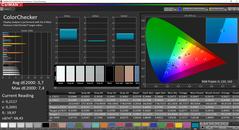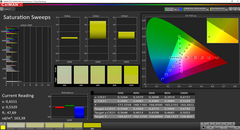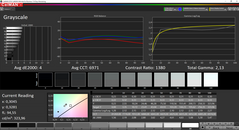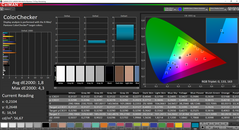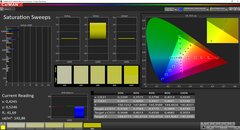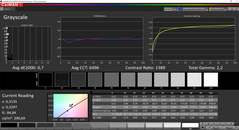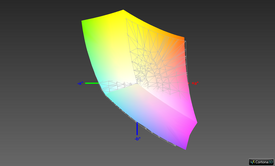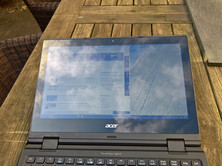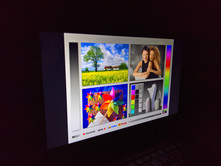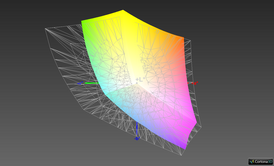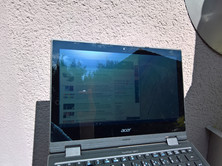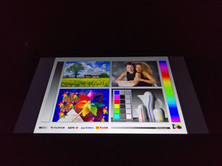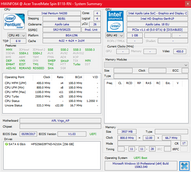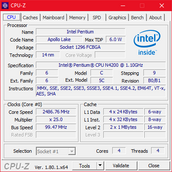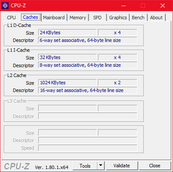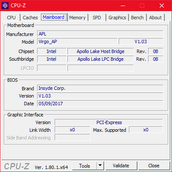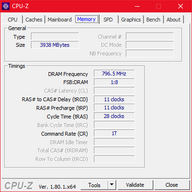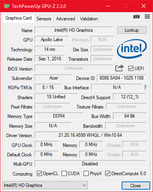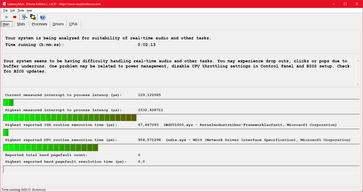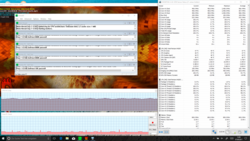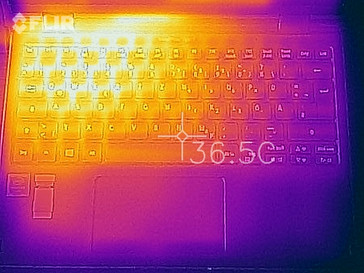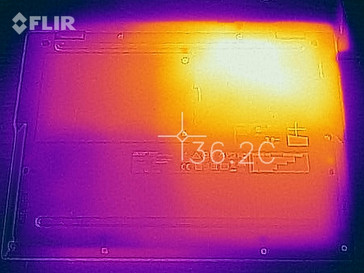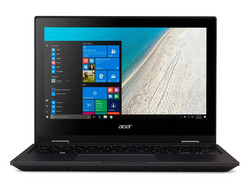Acer TravelMate Spin B1 Convertible Review

The education sector is hotly contested and most manufacturers want a piece of the pie: Apple with their iPad, Google with the Chromebook and Microsoft with affordable Windows notebooks. Our review laptop is such a device. More precisely, the Acer TravelMate Spin B1 is a convertible designed to take the place of books and other tools within the educational sector.
The TravelMate Spin B1 was introduced in May as Microsoft's next big play in the education sector. Its core attributes are the affordable price, the sturdy chassis and the 2-in-1 design. We selected the Dell Latitude 3180, ASUS Vivobook E200HA, HP Probook x360 as well as the Acer Spin 1 for our comparison. Our review notebook comes with a Pentium N4200, 4 GB of RAM and a 256 GB SSD and costs at least 675 Euro (~$810).
Chassis & Connectivity
So how do you design an affordable, but at the same time sturdy notebook for students? The answer is simple: make the chassis out of thick, black plastic. While the result might not look great nor be very light, it's at least resilient. The TravelMate Spin B1 doesn't look or feel very upscale, but the design is robust and the base unit in particular is torsionally very rigid. Even localized pressure has next to no effect. Only the display falls a bit short here, as it doesn't take a whole lot of pressure to affect the picture. Strangely enough the hinges, which allow the display to flip a convertible-typical 360°, have a lot of play. This could be a peculiarity of our review unit, but we can't say if this excess movement is detrimental to the longevity of the hinges.
Connectivity
The connectivity is decent, although we do think that Acer could've thrown in a USB Type-C port for good measure. This aspect of future-proofing might only be of minor importance to schools, so this isn't really a major drawback. Slightly more concerning is the location of the ports, since the are all jammed together. Given the small footprint, this can't really be avoided, but the user has to accept possible port contention depending on what's plugged in.
The Intel Wireless 7265 wireless card is an older-generation 2x2 AC WLAN module. The card is used in several of the notebooks in our comparison, but its performance is the lowest in our Spin B1. The SD card reader is very slow as well and inserted cards stick out. In some areas, the system definitely shows its low price point.
| SD Card Reader | |
| average JPG Copy Test (av. of 3 runs) | |
| HP ProBook x360 11 G1 EE Z3A47EA (Toshiba Exceria Pro SDXC 64 GB UHS-II) | |
| Acer TravelMate Spin B1 118-RN-P6BE (Toshiba Exceria Pro SDXC 64 GB UHS-II) | |
| maximum AS SSD Seq Read Test (1GB) | |
| HP ProBook x360 11 G1 EE Z3A47EA (Toshiba Exceria Pro SDXC 64 GB UHS-II) | |
| Acer TravelMate Spin B1 118-RN-P6BE (Toshiba Exceria Pro SDXC 64 GB UHS-II) | |
| Networking | |
| iperf3 transmit AX12 | |
| HP ProBook x360 11 G1 EE Z3A47EA | |
| Dell Latitude 3180 | |
| Acer TravelMate Spin B1 118-RN-P6BE | |
| iperf3 receive AX12 | |
| HP ProBook x360 11 G1 EE Z3A47EA | |
| Dell Latitude 3180 | |
| Acer TravelMate Spin B1 118-RN-P6BE | |
Input Devices
The review notebook is equipped with a chiclet keyboard without a backlight - something that is to be expected in this price range. The matte keys have a rough surface but the typing experience isn't that great. While the key travel is adequate, the actuation point isn't well defined at all, so the keyboard isn't particularly well-suited for users who need to type a lot. It's also important to point out the keyboard isn't full size and thus not as wide as it would be on a regular notebook. In other words, it might take a fairly long adjustment period to get used to typing on the Spin B1.
The clickpad underneath the keyboard functions well as far as moving the cursor with a high amount of accuracy is concerned, but its actuation mechanism is somewhat strange. The surface yields when pressed without registering a click even when reaching the endpoint. In essence registering a click requires two presses, which feels strange and is highly irritating during everyday use.
Since this is a convertible, the Spin B1 of course features a touch display in addition to the touchpad and the keyboard. An active digitizer-stylus is included as well. The pen functions flawlessly and accurately even at the very edges and can be - since it supports pressure levels - used for drawing as well.
Display
Acer didn't take any shortcuts when it comes to the display, as all variants of the TravelMate Spin B1 are equipped with a 11.6-inch Full HD display (1920 x 1080 pixels). The display is based on IPS technology and it's reflective because of the glass panel up front.
Compared to the competitors, Acer uses without a doubt the highest-end panel. The average brightness of 290 cd/m² is the highest of the bunch and the coverage of the professional color space sRGB is - at 97 % - very good indeed. No other competitor in this price range offers the same performance. The contrast of 1409:1 is also surprisingly good for an inexpensive notebook. The only downside is the brightness distribution, which is quite uneven at 80 %. There's next to no backlight bleeding and the PWM frequency of 1000 Hz is high enough to not have any ill effects.
| |||||||||||||||||||||||||
Brightness Distribution: 80 %
Center on Battery: 324 cd/m²
Contrast: 1409:1 (Black: 0.23 cd/m²)
ΔE ColorChecker Calman: 3.7 | ∀{0.5-29.43 Ø4.8}
ΔE Greyscale Calman: 4 | ∀{0.09-98 Ø5}
97.3% sRGB (Argyll 1.6.3 3D)
63.7% AdobeRGB 1998 (Argyll 1.6.3 3D)
71.6% AdobeRGB 1998 (Argyll 3D)
97.5% sRGB (Argyll 3D)
71.6% Display P3 (Argyll 3D)
Gamma: 2.13
CCT: 6971 K
| Acer TravelMate Spin B1 118-RN-P6BE LM116LF3L02, , 1920x1080, 11.6" | Dell Latitude 3180 BOE NT11621, , 1366x768, 11.6" | Asus VivoBook E200HA-FD0041TS Chi Mei CMN1130, N116BGE-EB2, , 1366x768, 11.6" | HP ProBook x360 11 G1 EE Z3A47EA Chi Mei CMN1139, , 1366x768, 11.6" | Acer Spin 1 SP111-31-C79E AU Optronics B116HAN05.0, , 1920x1080, 11.6" | |
|---|---|---|---|---|---|
| Display | -40% | -36% | -39% | -28% | |
| Display P3 Coverage (%) | 71.6 | 40.78 -43% | 43.73 -39% | 41.67 -42% | 49.67 -31% |
| sRGB Coverage (%) | 97.5 | 61.4 -37% | 65.1 -33% | 62.4 -36% | 72.6 -26% |
| AdobeRGB 1998 Coverage (%) | 71.6 | 42.13 -41% | 45.23 -37% | 43.07 -40% | 51.4 -28% |
| Response Times | 3% | 10% | 5% | 12% | |
| Response Time Grey 50% / Grey 80% * (ms) | 38 ? | 40 ? -5% | 45 ? -18% | 40 ? -5% | 36 ? 5% |
| Response Time Black / White * (ms) | 29.2 ? | 26 ? 11% | 18 ? 38% | 25 ? 14% | 24 ? 18% |
| PWM Frequency (Hz) | 1000 ? | 200 ? | 24750 ? | ||
| Screen | -97% | -40% | -82% | -15% | |
| Brightness middle (cd/m²) | 324 | 253 -22% | 267 -18% | 174 -46% | 251 -23% |
| Brightness (cd/m²) | 290 | 236 -19% | 265 -9% | 166 -43% | 247 -15% |
| Brightness Distribution (%) | 80 | 85 6% | 85 6% | 90 13% | 86 8% |
| Black Level * (cd/m²) | 0.23 | 0.47 -104% | 0.35 -52% | 0.29 -26% | 0.21 9% |
| Contrast (:1) | 1409 | 538 -62% | 763 -46% | 600 -57% | 1195 -15% |
| Colorchecker dE 2000 * | 3.7 | 12.87 -248% | 6.67 -80% | 11.38 -208% | 4.27 -15% |
| Colorchecker dE 2000 max. * | 7.4 | 21.99 -197% | 10.32 -39% | 19.59 -165% | 11 -49% |
| Greyscale dE 2000 * | 4 | 13.97 -249% | 7.84 -96% | 12.75 -219% | 3.77 6% |
| Gamma | 2.13 103% | 2.46 89% | 2.3 96% | 2.49 88% | 2.26 97% |
| CCT | 6971 93% | 18336 35% | 8076 80% | 15367 42% | 6524 100% |
| Color Space (Percent of AdobeRGB 1998) (%) | 63.7 | 39 -39% | 42 -34% | 40 -37% | 47 -26% |
| Color Space (Percent of sRGB) (%) | 97.3 | 61 -37% | 65 -33% | 63 -35% | 72 -26% |
| Total Average (Program / Settings) | -45% /
-72% | -22% /
-33% | -39% /
-62% | -10% /
-14% |
* ... smaller is better
Display Response Times
| ↔ Response Time Black to White | ||
|---|---|---|
| 29.2 ms ... rise ↗ and fall ↘ combined | ↗ 16.4 ms rise | |
| ↘ 12.8 ms fall | ||
| The screen shows relatively slow response rates in our tests and may be too slow for gamers. In comparison, all tested devices range from 0.1 (minimum) to 240 (maximum) ms. » 77 % of all devices are better. This means that the measured response time is worse than the average of all tested devices (20.3 ms). | ||
| ↔ Response Time 50% Grey to 80% Grey | ||
| 38 ms ... rise ↗ and fall ↘ combined | ↗ 17.6 ms rise | |
| ↘ 20.4 ms fall | ||
| The screen shows slow response rates in our tests and will be unsatisfactory for gamers. In comparison, all tested devices range from 0.165 (minimum) to 636 (maximum) ms. » 54 % of all devices are better. This means that the measured response time is worse than the average of all tested devices (31.7 ms). | ||
Screen Flickering / PWM (Pulse-Width Modulation)
| Screen flickering / PWM detected | 1000 Hz | ≤ 20 % brightness setting | |
The display backlight flickers at 1000 Hz (worst case, e.g., utilizing PWM) Flickering detected at a brightness setting of 20 % and below. There should be no flickering or PWM above this brightness setting. The frequency of 1000 Hz is quite high, so most users sensitive to PWM should not notice any flickering. In comparison: 53 % of all tested devices do not use PWM to dim the display. If PWM was detected, an average of 8169 (minimum: 5 - maximum: 343500) Hz was measured. | |||
Subjectively, the display quality is impressive. As shipped, there's a slight greenish hue though, although a calibration takes care of that. As always, we include a link to download the profile.
Outdoor use is hampered by the glossy display. While the brightness of 290 cd/m² would certainly be sufficient for a non-glare display, the reflective character of the panel makes outdoor use almost impossible.
As it is typical for IPS displays, the viewing angle stability is excellent and easily surpasses those of TN-based panels.
Performance
In Germany, the Acer TravelMate Spin B1 is offered in eight different configurations with prices ranging from 320 to 670 Euro (~$380-800). Our review notebook is the most expensive version with Windows 10 Pro, a 256 GB SSD and Intel Pentium N4200 processor. The lower-end models come with Windows 10 Home or even Linux and a 128 GB instead of a 256 GB SSD; the least expensive model comes with a 500 GB conventional hard drive. The three lowest-end versions come with a Celeron N3450 instead of the Pentium processor..
The RAM remains unchanged: all versions of the TravelMate Spin B1 come with 4 GB of DDR3L RAM. The RAM is soldered on and thus cannot be upgraded.
Processor
The Intel Pentium N4200 is a quad-core processor which utilizes Intel's Apollo Lake architecture. As an Atom-based CPU, the processor is ideal for notebooks where the lowest possible price is of the utmost importance. Neither the four cores nor the Turbo clock speed of 2.5 GHz (base: 1.1 GHz) can hide the fact that this CPU is only suitable for undemanding tasks. On the other hand, the TDP of 6 W is also quite low.
Even during the Cinebench test, the processor can't reach its full potential. We measured a clock speed of 1.6 GHz during the Multicore portion of the test. The Spin B1 is not nearly as fast as it could be and about 22 - 23 % slower than other notebooks with the Pentium N4200. At least the performance doesn't drop during prolonged load. During our 30 minute Cinebench R15 Multi loop test, the performance remained low, but didn't deteriorate further.
Using the notebook on battery power has no impact on the performance.
System Performance
Considering the low-power hardware, it shouldn't come as a surprise that the TravelMate Spin B1 isn't exactly a top-notch performer. When running PCMark benchmark tests, which measure the overall system performance, the convertible doesn't even come close to equaling the performance of Core-i systems. Our review notebook places in the middle of the field when compared to other laptops with Intel Atom technology. Since the CPU doesn't reach its full potential, the other two notebooks with Pentium N4200 in our comparison are faster. During normal operation the system runs smoothly for the most part, but stutters do occur on a regular basis.
| PCMark 8 - Home Score Accelerated v2 | |
| Dell Latitude 3180 | |
| HP ProBook x360 11 G1 EE Z3A47EA | |
| Acer TravelMate Spin B1 118-RN-P6BE | |
| Acer Spin 1 SP111-31-C79E | |
| Asus VivoBook E200HA-FD0041TS | |
| PCMark 8 Home Score Accelerated v2 | 1989 points | |
| PCMark 10 Score | 1380 points | |
Help | ||
Storage Devices
The 256 GB SSD from Hynix is the one component which makes operation of the TravelMate Spin B1 bearable. Not all laptops in this price range come with SSDs. Even though the drive in question is of the slower SATA III variety, it is still significantly faster than the eMMC flash drive in the Asus Vivobook E200HA or the platter-based drive in the Acer Spin 1.
| Acer TravelMate Spin B1 118-RN-P6BE SK Hynix HFS256G39TND-N210A | Dell Latitude 3180 Liteonit CV3-8D128 | Asus VivoBook E200HA-FD0041TS Hynix HBG4a2 32 GB eMMC | HP ProBook x360 11 G1 EE Z3A47EA SanDisk SD8SN8U256G1006 | Acer Spin 1 SP111-31-C79E Toshiba MQ01ABF050 | |
|---|---|---|---|---|---|
| CrystalDiskMark 3.0 | -6% | -55% | 13% | -88% | |
| Read Seq (MB/s) | 480.6 | 482.6 0% | 163.2 -66% | 458.4 -5% | 109.1 -77% |
| Write Seq (MB/s) | 262.2 | 213.2 -19% | 115.3 -56% | 453.5 73% | 107.3 -59% |
| Read 512 (MB/s) | 313.1 | 276.5 -12% | 154.9 -51% | 317.1 1% | 35.89 -89% |
| Write 512 (MB/s) | 261.4 | 162.6 -38% | 108.8 -58% | 369.8 41% | 45.28 -83% |
| Read 4k (MB/s) | 15.91 | 18.17 14% | 16.62 4% | 12.3 -23% | 0.482 -97% |
| Write 4k (MB/s) | 54.2 | 44.77 -17% | 19.23 -65% | 58.1 7% | 1.037 -98% |
| Read 4k QD32 (MB/s) | 119.3 | 132.7 11% | 30.25 -75% | 123.8 4% | 1.003 -99% |
| Write 4k QD32 (MB/s) | 106.9 | 118.1 10% | 28.32 -74% | 112.1 5% | 1.043 -99% |
Graphics Card
The Intel HD Graphics 505 is a low-end iGPU based on the Intel Skylake GPU architecture and therefore related to other Gen9 iGPUs like the Intel HD Graphics 520. The graphics card features 6 execution units less than the HD Graphics 520 and tops out at 750 MHz instead of 1050 MHz because of the lower TDP of the CPU/GPU combo.
Well - at least that's the theory. During our benchmark test, the GPU never reached the advertised 750 MHz, but ran at an average of only 350 MHz. Compared to other notebooks with the Intel HD 505, the TravelMate Spin B1 is consequently the slowest system. The 3DMark 11 scores of competitors like the HP Probook x360 11 and the Dell Latitude 3180 are between 50 to 75 % higher.
Running the convertible unplugged from the outlet doesn't reduce the performance any further.
| 3DMark 11 - 1280x720 Performance GPU | |
| Dell Latitude 3180 | |
| HP ProBook x360 11 G1 EE Z3A47EA | |
| Acer TravelMate Spin B1 118-RN-P6BE | |
| Acer Spin 1 SP111-31-C79E | |
| Asus VivoBook E200HA-FD0041TS | |
| 3DMark 11 Performance | 500 points | |
Help | ||
Gaming Performance
Given the low graphics capabilities, it shouldn't come as a surprise that the TravelMate Spin B1 isn't really usable for gaming, which might not be a disadvantage given that the device is designed for the education sector. Very basic casual games or very old titles should still run adequately, however.
| low | med. | high | ultra | |
|---|---|---|---|---|
| BioShock Infinite (2013) | 21.04 |
Emissions & Energy
Noise Level
Since there is no fan, the Spin B1 is completely silent, no matter how hard the CPU and the GPU are working. We also didn't notice any coil whine or other annoying sounds.
It needs to be pointed out that not all versions of this TravelMate are inaudible - models with HDD emit the typical whirring sound and access noise. Our review convertible is equipped with an SSD and dead silent.
Temperature
A laptop without a fan is bound to get hot - or so one might think. The TravelMate Spin B1 does indeed get warm at a maximum of 45 °C, but this temperature is far from critical.
With both the CPU and GPU at 100 % utilization, the CPU runs at the base frequency of 1.1 GHz for 15 minutes, while the GPU only operates at 150 MHz. Both components only consume a total of 4 W. It appears that Acer implemented a TDP restriction which becomes active when both the processor and the graphics card are running at their respective maximums. After 15 minutes the CPU reached 70 °C and the frequency all of a sudden dropped to only 400 MHz. It seems that there's not only a TDP, but also a temperature limit at work, which prevents excessive heat generation.
We repeat the 3DMark 11 benchmark again directly after the stress test. The resulting score remains nearly the same, which means that the throttling doesn't really impact every day use, although the convertible is quite slow to begin with.
(±) The maximum temperature on the upper side is 42.9 °C / 109 F, compared to the average of 35.4 °C / 96 F, ranging from 19.6 to 60 °C for the class Convertible.
(-) The bottom heats up to a maximum of 45.6 °C / 114 F, compared to the average of 36.8 °C / 98 F
(+) In idle usage, the average temperature for the upper side is 27.7 °C / 82 F, compared to the device average of 30.3 °C / 87 F.
(+) The palmrests and touchpad are reaching skin temperature as a maximum (34.6 °C / 94.3 F) and are therefore not hot.
(-) The average temperature of the palmrest area of similar devices was 27.9 °C / 82.2 F (-6.7 °C / -12.1 F).
Speakers
What should we expect from a laptop with a starting price of 300 Euro (~$360) when it comes to the quality of the speakers? The answer: not much. The speakers, which fire towards the bottom, lack bass, don't get very loud and sound quite tinny.
Users who want better sound should use the headphone jack, which delivers decent sound output.
Acer TravelMate Spin B1 118-RN-P6BE audio analysis
(±) | speaker loudness is average but good (72.9 dB)
Bass 100 - 315 Hz
(-) | nearly no bass - on average 22.4% lower than median
(±) | linearity of bass is average (11% delta to prev. frequency)
Mids 400 - 2000 Hz
(+) | balanced mids - only 4.8% away from median
(+) | mids are linear (5.6% delta to prev. frequency)
Highs 2 - 16 kHz
(+) | balanced highs - only 3.3% away from median
(±) | linearity of highs is average (10% delta to prev. frequency)
Overall 100 - 16.000 Hz
(±) | linearity of overall sound is average (25.1% difference to median)
Compared to same class
» 76% of all tested devices in this class were better, 7% similar, 18% worse
» The best had a delta of 6%, average was 20%, worst was 57%
Compared to all devices tested
» 76% of all tested devices were better, 5% similar, 19% worse
» The best had a delta of 4%, average was 24%, worst was 134%
HP ProBook x360 11 G1 EE Z3A47EA audio analysis
(±) | speaker loudness is average but good (74.8 dB)
Bass 100 - 315 Hz
(-) | nearly no bass - on average 29.2% lower than median
(±) | linearity of bass is average (11.8% delta to prev. frequency)
Mids 400 - 2000 Hz
(+) | balanced mids - only 3.7% away from median
(+) | mids are linear (6.4% delta to prev. frequency)
Highs 2 - 16 kHz
(±) | higher highs - on average 8.7% higher than median
(+) | highs are linear (6.8% delta to prev. frequency)
Overall 100 - 16.000 Hz
(±) | linearity of overall sound is average (29.3% difference to median)
Compared to same class
» 87% of all tested devices in this class were better, 3% similar, 10% worse
» The best had a delta of 6%, average was 20%, worst was 57%
Compared to all devices tested
» 87% of all tested devices were better, 3% similar, 11% worse
» The best had a delta of 4%, average was 24%, worst was 134%
Frequency Comparison (Checkbox selectable!)
Graph 1: Pink Noise 100% Vol.; Graph 2: Audio off
Power Consumption
Not surprising is the fact that the notebook consumes little power, since the CPU maxes out at 7 W. When both the CPU and the GPU are working hard at the same time, the consumption drops to only 4 W. Both the idle as well as the load maximum are very low and the TravelMate Spin B1 is indeed a very frugal notebook.
Since the maximum power consumption never exceeds 30 W, the 45 W power adapter can easily handle the load.
| Off / Standby | |
| Idle | |
| Load |
|
Key:
min: | |
Battery Life
Although the power draw is low, the battery run times are quite disappointing. That is actually quite strange, since Acer uses a battery with a capacity of 48 Wh, which seems pretty generous.
One of the reasons for the subpar performance during the WLAN battery test could be the display - most competitors only feature panels with HD resolution. A panel with lower pixel density consumes less power at the same brightness level. Acer's own Spin 1, however, also has a Full HD panel and scores much higher. This particular model consumes even less power under low load, which might also makes a difference.
Pros
Cons
Verdict
The TravelMate Spin B1 isn't a mainstream convertible, but a laptop specifically designed specifically for the education sector. Given the target audience, Acer did quite a few things right. Classroom use requires a sturdy chassis and the Spin B1 delivers in that aspect. A bright display panel is desirable as well and at 290 cd/m², the TravelMate is equipped with one - especially when compared to the competition. In addition, the display is a touchscreen and supports a stylus, which is quite helpful in this field. The TravelMate is passively cooled, so there is no fan that can get plugged up or broken when the notebook is handled roughly. Schools are using hardware for longer than businesses or home users, so longevity is a very import aspect of the design.
There are a few things that could use improvement. The display is bright and surprisingly colorful, but it's very reflective as well - we think an at least semi-matte panel would've been a much more appropriate choice. The clickpad is quite strange, feels weird and can't be operated comfortably. The battery life isn't great either - students who would like an inexpensive secondary notebook need to consider this as a major con. Last but not least, the TravelMate doesn't utilize the full potential of the processor; the also passively-cooled Dell Latitude 3180 and the Dell Latitude 3180 (N4200, HD) Laptop ReviewAsus VivoBook E200HA do a much better job in that regard. The only saving grace as far as daily operation is concerned is the SSD.
The Acer TravelMate Spin B1 is a decidedly mixed bag: while the display quality is impressive, the convertible has a lot of drawbacks as well.
The points above make it difficult to whole-heartedly recommend the Spin B1. The fact that the TravelMate is a convertible is not a unique selling feature and neither is the fanless design. The price differences are fairly minor as well. One of the major plus points is the display: users who need adequate coverage of the color spaces and great viewing angle stability might consider the TravelMate over its competition.
Acer TravelMate Spin B1 118-RN-P6BE
- 09/11/2017 v6 (old)
Benjamin Herzig




